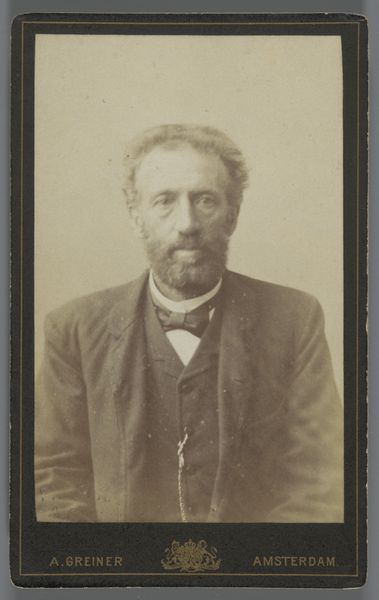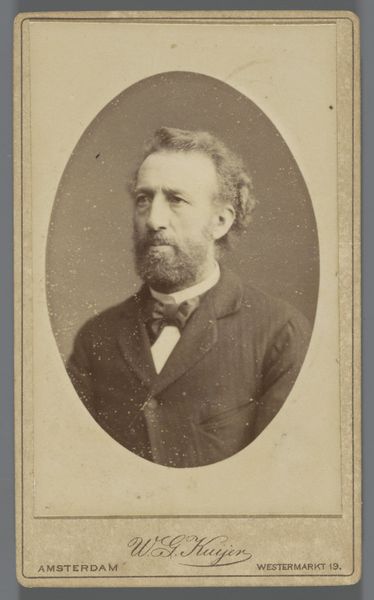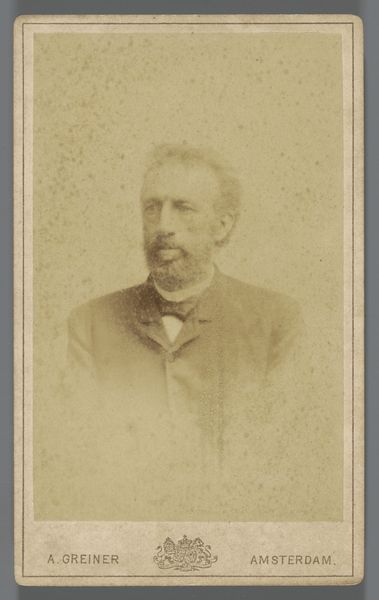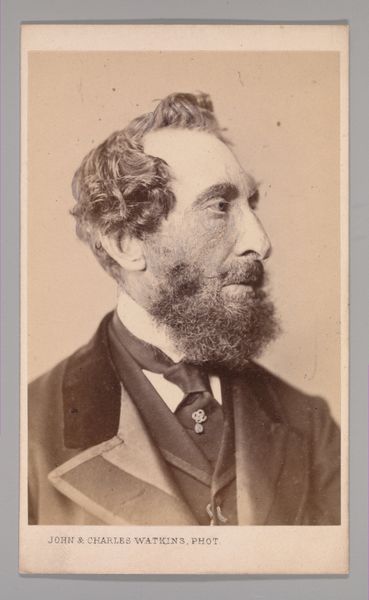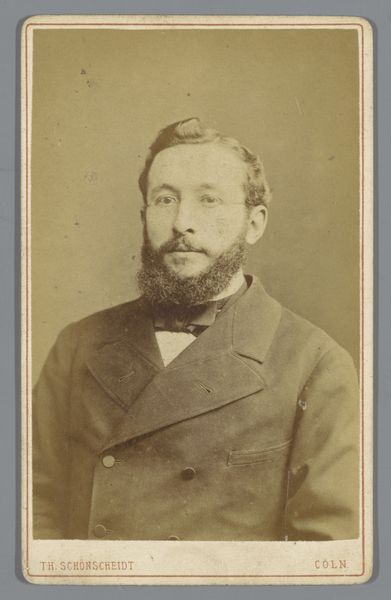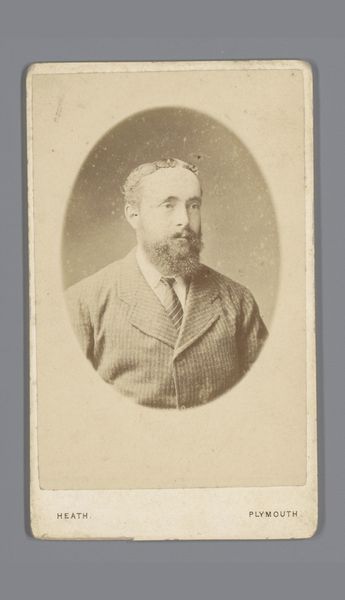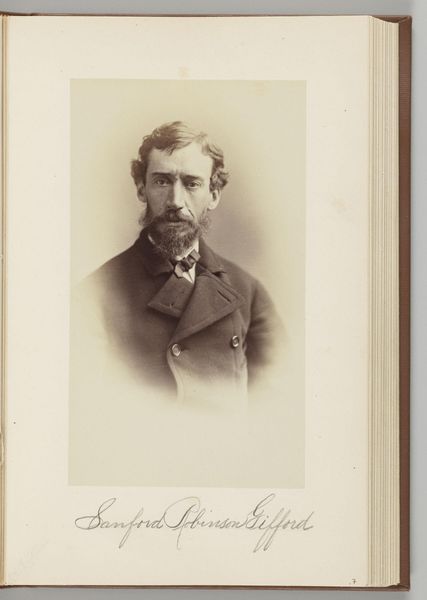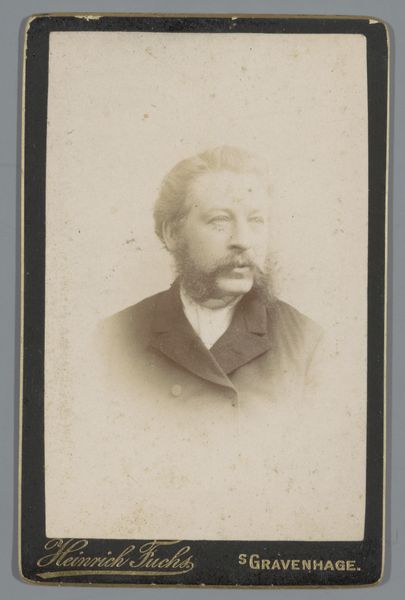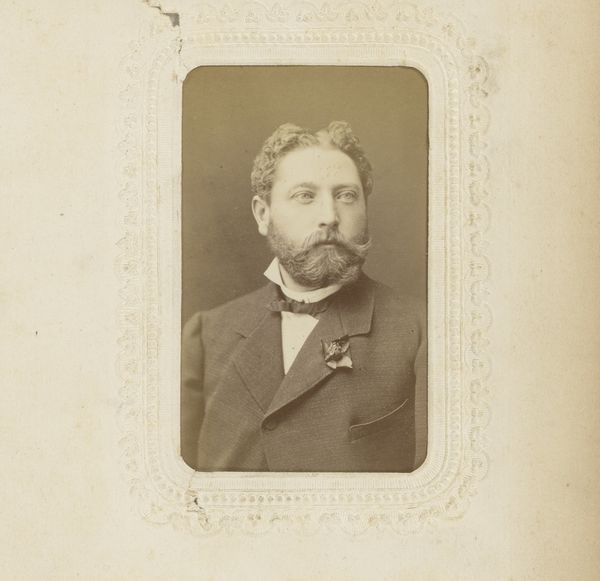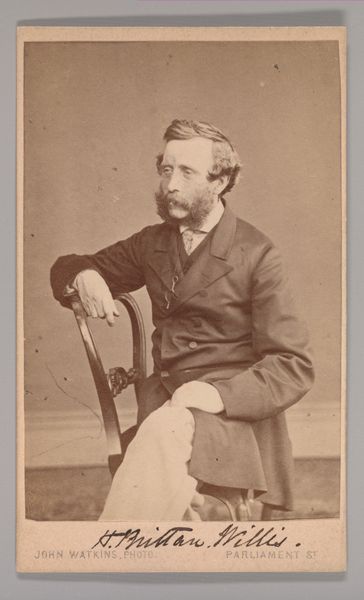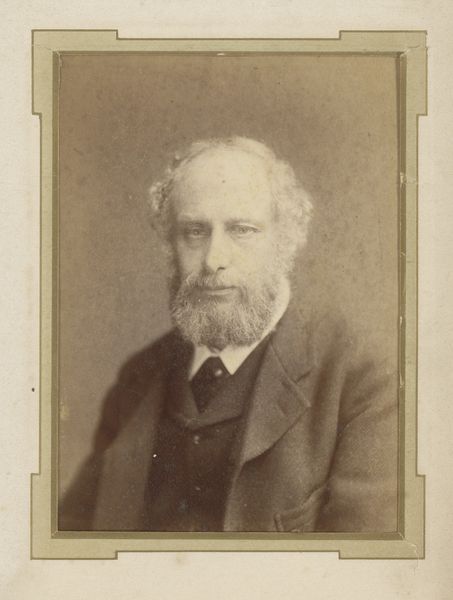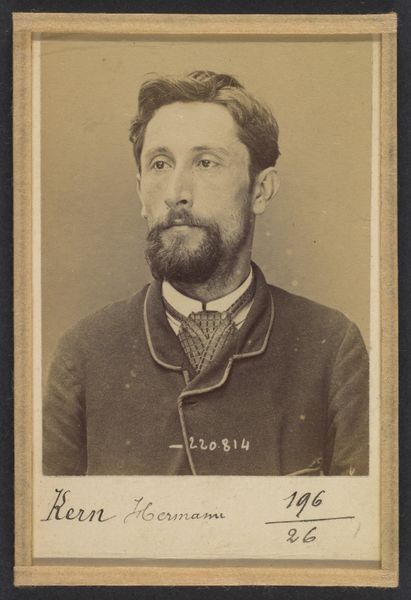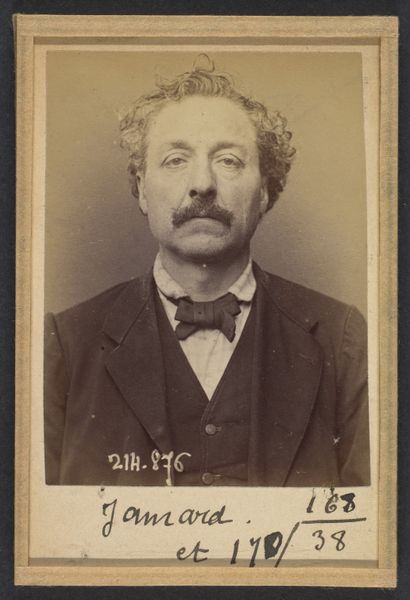
Portret van een man uit de familie Marmelstein, vermoedelijk de vader van A. F. Marmelstein 1850 - 1900
0:00
0:00
albertgreiner
Rijksmuseum
photography, gelatin-silver-print
#
portrait
#
photography
#
gelatin-silver-print
Dimensions: height 164 mm, width 104 mm
Copyright: Rijks Museum: Open Domain
Curator: This is a gelatin-silver print portrait of a man from the Marmelstein family, believed to be the father of A. F. Marmelstein. It was created sometime between 1850 and 1900 by Albert Greiner, here in Amsterdam. Editor: My first thought is gravity. There's a quiet solemnity, a weight carried in his eyes. And the sepia tones emphasize that historical distance. Curator: Photography, particularly portraiture, became a vital tool for shaping and preserving the identity of the middle class during that era. A family wanting to record their lineage… Editor: Precisely, the symbols speak of social climbing and preservation. His attire—the carefully knotted bow tie, the tailored jacket—these are not accidental. They present an image of respectability, projecting a desired identity. What does it tell us about the Marmelstein family? Curator: The photograph was created during a period when Jewish emancipation was gradually advancing across Europe. These objects became tools for demonstrating assimilation, while holding on to a distinctive cultural memory. Editor: Interesting that you see that duality—assimilation and remembrance—because I feel it strongly in the image. He seems to exist between worlds, trying to reconcile tradition with the changing modern world. I am curious what that stern, measured expression shields... Curator: Perhaps it is the new societal position that required that very careful control over image. The professional class depended on outward displays of stability and morality. Editor: Agreed. But there's something undeniably human beneath it. The slight asymmetry of his beard, the lines around his eyes—they hint at a lived experience beyond the studio portrait. Curator: And this photographer, Greiner, operating in Amsterdam… this portrait acts as a tangible piece of local social history. How people saw themselves, how they wished to be seen… Editor: Absolutely. It all converges into this potent little image—desire, representation, social forces… It truly captures more than just a likeness. Curator: It makes you wonder what future audiences will interpret about our own photographs a hundred years from now! Editor: Indeed, a question that echoes every time we peer into images like this one.
Comments
No comments
Be the first to comment and join the conversation on the ultimate creative platform.
